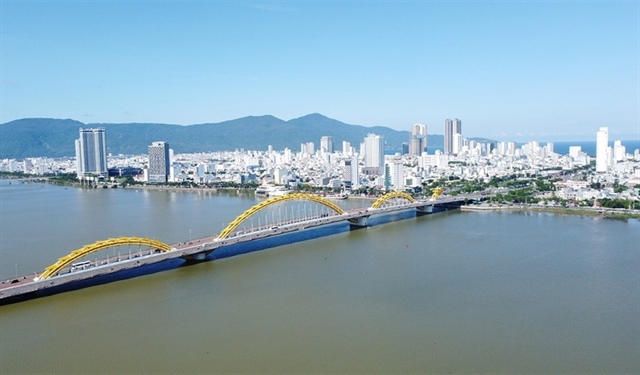Credit expansion triggers inflation fears
Credit expansion triggers inflation fears
The country's outstanding loans will likely grow by 2 per cent each month for the rest of the year, raising the national credit growth rate to 12-13 per cent by the year-end, according to the State Bank of Viet Nam.
This means that each month about VND50 trillion (US$2.4 billion) is expected to be injected into the economy.
However, experts question whether the economy can fully absorb such a big volume of money, and whether a high rate of inflation will return.
Some experts say the credit growth rate should be 1.5-1.7 per cent per month because anything higher could cause high inflation to return next year. In the country's current economic situation, however, they believe the 10-per-cent credit growth rate is appropriate.
Experts say that even though monetary policy has been loosened, an explosion in credit growth would probably not occur in the remaining months of the year because of bad debts, which have caused banks to be reluctant to lend. In addition, many enterprises do not want to borrow money now because of rising inventories created by both the global and domestic market's sharply falling demand.
According to the General Statistics Office, Viet Nam's Consumer Price Index (CPI) in May increased by 0.18 per cent compared with April. The CPI of HCM City, the country' biggest economic hub, rose by only 0.06 per cent, which was the lowest level since September 2010.
Consequently, though banks' lending interest rates have dropped sharply under the central bank's permissible 13-per-cent level, their capital disbursement remains slow.
Pham Thien Long, deputy general director of HDBank, said that the bank already lowered its lending interest rate to 12 per cent per annum, but few enterprises were ready to borrow.
In the face of this situation, public investment projects are expected to be major contributors to raising the country's credit growth rate for the rest of the year. Capital pumped into the economy in the next six months will mainly come from the State budget and most of it will be used for public investment projects, whose contractors stand to benefit.
According to economic experts' calculations, capital injected into projects approved by the National Assembly alone over the next six months will climb to VND21 trillion ($1 billion) per month.
Foreign cafes enter market
In recent years, many famous cafes have penetrated the market with special selling points and products, as well as attractive premises and designs.
One of these is the 40-year-old US-based Coffee Bean&Tea Leaf, a coffeehouse chain which has been present in Viet Nam since 2008 after the Viet Coffee Company bought the copyright to use the prestigious brand name. After three years, the chain has made a strong impression in Viet Nam.
Viet Coffee has seven Coffee Bean and Tea Leaf stores in HCM City and two in Ha Noi.
Australia's Gloria Jeans Coffee cafes have also set up shop in HCM City, and have been quick to grasp opportunities to expand their market share in Viet Nam.
The prices of Gloria Jeans' products are lower than those of The Coffee Bean&Tea Leaf, although some customers believe the latter serves better coffee. However, Gloria Jeans cafes are popular with the younger set because of a wide variety of toppings, like chocolate syrup, honey, cinnamon, chocolate powder, com xanh and com do (green and grilled red rice) that customers can put on their drinks themselves.
Next year, the international powerhouse, the US-based Starbucks chain, will open in Viet Nam. Starbucks is the largest coffeehouse company in the world, with 19,555 stores in 58 countries. Starbucks sells drip-brewed coffee, espresso-based hot drinks, other hot and cold drinks, coffee beans, salads, hot and cold sandwiches and panini, pastries, snacks, and items such as mugs and tumblers, similar offerings to the Coffee Bean &Tea Leaf stores.
A representative of the Viet Nam Coffee Association (VICOFA) says that the presence of many famous and long-standing foreign coffee brand names in Viet Nam has given Vietnamese consumers more choices and opened up the market.
Most owners do not directly retail their products but focus mainly on expanding their coffeehouse chains through franchises.
Most of the foreign coffee shops are located in the centres of major cities, where they can be more competitive. Their presence, however, has created fierce competition for Vietnamese coffee companies to retain market share and their image. They will have to keep renewing and updating their products and services so they can remain alive in the market.
Gold owners left holding bag
Trinh Thi Loan who lives in HCM City's District 2 has gold of less than one tael (1.2 troy ounces) and wants to deposit it at a bank, but many commercial banks in the city have refused to take it.
At a branch of the Asia Commercial Bank, Loan was surprised when she discovered that the bank had stopped taking gold of less than one tael (1.2 troy ounces).
Customers who want to deposit one tael or more now receive a low interest rate of only 1 per cent per annum, much lower than the previous 3 per cent rate. An employee at a branch of Dong A Commercial Bank on Nguyen Cong Tru Street said that the bank had decided to no longer take gold deposits.
If customers want the bank to keep their gold for safety reasons, they must pay fees equivalent to 0.05 per cent of the value of the gold, according to the employee.
Some commercial banks are still taking gold but at very low interest rates.
The central bank recently issued a directive urging commercial banks to seriously implement the regulation on taking deposits or loaning in gold, effective in November.
The central bank has also required banks to issue only short-term gold certificates upon request. They will no longer be able to do this after November 25.
The central bank's regulations on gold mobilisation and lending will make it easier for authorised agencies to manage the gold market but, of course, cause difficulties for people who want to deposit their gold.
The demand to deposit gold to earn money is very high, with an estimated at 500 tonnes of gold being held by the public.
Dr Cao Sy Kiem, member of the National Advisory Council for Monetary Policies, said the central bank should create a gold mobilisation plan soon so this abundant capital resource could be used for the development of the economy. The central bank plan should ensure safety, effectiveness and benefits to both banks and depositors, and should minimise risks, he said.
Senior economic expert Le Xuan Nghia said the implementation of a gold mobilisation plan was necessary, but that the scheme should be made carefully. He added that the plan should take into consideration the people's demand to deposit gold, conversion of gold to dong, and banks needed to trade gold via overseas accounts.
vietnamnet

























